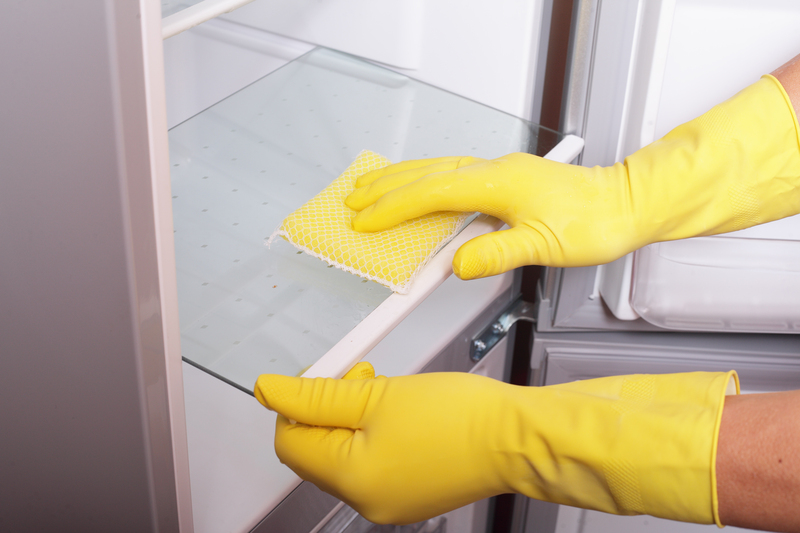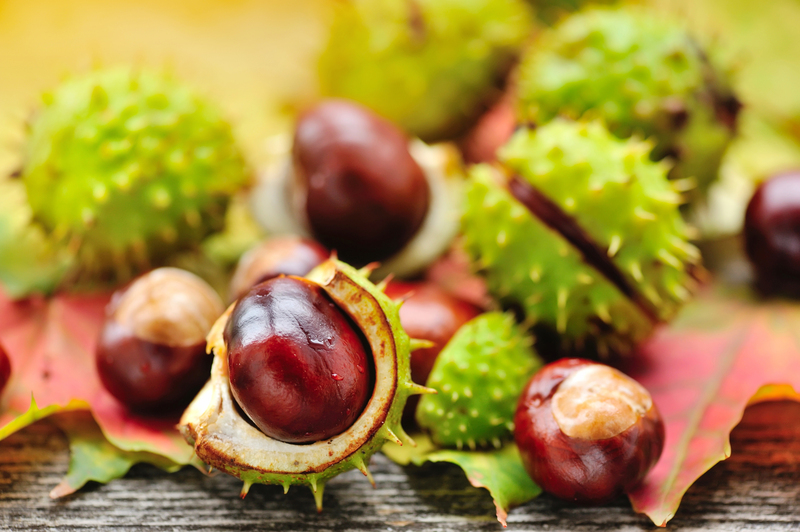Top Strategies to Effortlessly Erase Burnt Residue from Your Stovetop
Posted on 27/06/2025
Top Strategies to Effortlessly Erase Burnt Residue from Your Stovetop
Is the burnt residue on your stovetop becoming an eyesore in your kitchen? Burn marks and stubborn grime aren't just unattractive, they can also affect your stove's functionality and hygiene. In this comprehensive guide, you'll discover proven, easy-to-apply techniques for removing burnt on stains from your cooktop--no matter if it's gas, electric, or glass. Read on for expert advice, insider tricks, and step-by-step instructions to effortlessly restore your stovetop's shine.

Why is Burnt Residue on Stovetops So Stubborn?
The combination of greasy spills, high temperatures, and sugary sauces can create a stubborn layer of burnt residue on your stovetop. Over time, this carbonized layer hardens, bonding tightly with the stove's surface. Whether you're dealing with mild scorch marks or heavy, black build-up, the key to removing burnt residue is choosing the right cleaning approach for your specific stovetop type.
Common Types of Stovetops and Their Cleaning Needs
- Gas Stovetops: Feature burner grates and removable components. These can collect thick burnt-on food and grime, especially around the burner heads.
- Electric Coil Stoves: Prone to food spillage beneath coils and on the drip pans, leading to persistent residue.
- Glass & Ceramic Stovetops: Sleek and modern, but easily marred by burnt stains, which require gentle handling to prevent scratching.
Preparation: Essential Tools and Natural Cleaners
Before you start cleaning, gather the following supplies. Many burnt stovetop cleaning solutions use household staples found in your pantry!
- Baking Soda: A safe, gentle abrasive.
- White Vinegar: Cuts through grease and helps loosen burnt-on residue.
- Lemon Juice: Natural deodorizer and degreaser.
- Dish Soap: Effective for breaking down grease.
- Non-scratch Scrubber or Sponge: Protects delicate surfaces while scrubbing away burnt food.
- Microfiber Cloths: For polishing and wiping surfaces without leaving lint.
- Plastic or Silicone Scraper: Safe for removing stubborn, hardened residue.
- (Optional) Commercial Stove Cleaners: For deeply carbonized stains.
- Gloves: To protect your hands from harsh cleaners.
Step-by-Step Burnt Residue Removal for a Flawless Stovetop
Let's break down the best approaches to cleaning burnt on residue from your stove top. With these methods, your kitchen will sparkle and your stove will stay in peak condition.
1. The Power of Baking Soda and Vinegar
This timeless kitchen cleaning duo is unbeatable for erasing burnt food stains. Here's how to use baking soda and vinegar on a burnt stovetop:
- Sprinkle Baking Soda: Evenly cover the burnt area with a generous amount of baking soda.
- Add Vinegar: Spray or drizzle white vinegar over the baking soda. Watch for fizzing--this chemical reaction loosens burnt food and grime.
- Let Sit: Allow the mixture to sit for 10-15 minutes so it can break down the residues.
- Scrub Gently: Use a non-abrasive sponge or scrubber in a circular motion, applying additional pressure to tough spots.
- Wipe Clean: Wipe away the paste with a damp microfiber cloth, then buff dry.
Tip: For extra-stubborn burnt residue, let the paste sit longer or repeat the process!
2. Harnessing Lemon Power for a Fresh, Degreased Stovetop
Lemon juice is not only naturally acidic, but its fresh scent also helps deodorize your kitchen. Cut a lemon in half, squeeze its juice over the burnt areas, and scrub with the cut side of the lemon. The citric acid helps disintegrate burnt stains without harsh chemicals.
- Let the citric acid sit for 5-10 minutes before wiping away with a damp cloth.
- Stubborn patches? Sprinkle baking soda over the area first, then use the lemon scrub for a dual-action clean.
3. Soaking and Steaming for Effortless Cleaning
For electric burners or removable gas burner covers:
- Remove the Burnt Elements: Wait for everything to cool, then detach removable pieces.
- Soak in Hot, Soapy Water: Submerge in a sink of very hot water and a few drops of dish soap. Let soak for 20-30 minutes.
- Scrub Away the Burnt-On Food: Loosen residue with a plastic scraper or non-scratch pad.
- Rinse and Dry: Rinse thoroughly, dry, and replace on the stove.
For non-removable parts, place a hot, damp towel over the affected area and let the heat and moisture work for 15 minutes. The burnt residue will soften, making it easier to wipe or scrape away.
4. The Magic Eraser Technique for Glass and Ceramic Cooktops
Magic Erasers or other melamine foam pads are excellent for removing burnt residue from delicate glass stove tops without scratching.
- Wet the Magic Eraser, wring out excess water, and gently rub the burnt spots in a circular motion.
- Avoid excessive pressure to protect the stove's glass or ceramic coating.
- Wipe with a clean, damp microfiber cloth.
Never use metal scrapers or steel wool on glass or ceramic--these will cause permanent scratches!
5. The Commercial Cleaner Option
For burnt residue that resists all natural methods, opt for a specialty stovetop cleaner:
- Bar Keeper's Friend: Excellent for both stubborn burnt-on food and restoring shine.
- Cerama Bryte: Formulated for glass-ceramic cooktops, leaving no streaks or scratches.
- Read and follow all instructions closely, and always do a spot test on your stovetop.
Expert Tips to Prevent Burnt Residue on Your Stovetop
Prevention: Your Secret Weapon for a Spotless Stove
- Wipe spills immediately: Treat any boil-over or spill as soon as possible, before it has a chance to harden.
- Use drip pans and burner liners: Protect hard-to-reach areas and make future cleaning easier.
- Cook at moderate heat levels: Excessive heat increases burnt-on residue risk, especially with sugary sauces.
- Regular Maintenance: A daily wipe and a weekly deep-clean prevent buildup and save time.
Answers to Common Questions About Burnt Stovetop Cleaning
Which tools should I avoid to prevent damaging my stove?
- Metal Scrapers & Steel Wool: These can scratch and ruin glass, ceramic, and enamel surfaces.
- Harsh Chemicals: Avoid bleach and ammonia-based cleaners, especially on glass or painted finishes.
Is it safe to use oven cleaner on my stovetop?
Oven cleaner is generally too harsh for most stovetops (especially glass or ceramic). Only use if approved by your stove's manufacturer, and never on painted or aluminum surfaces.
How often should I deep-clean my stovetop?
For most households, a thorough cleaning once a week will prevent the buildup of burnt residue. Wipe down the stove after every cooking session for best results.

Key Takeaways: Achieve a Gleaming, Spotless Stove Easily
- Use a combination of baking soda, vinegar, and gentle scrubbing to remove burnt-on stains.
- For glass and ceramic, use dedicated non-scratch sponges and specialty cleaners.
- Prevention is crucial. Wipe spills promptly and maintain a regular cleaning schedule.
- Choose the right cleaning technique for your specific type of stovetop and the severity of the burnt residue.
- If all else fails, consult your stove's manual or a manufacturer-approved cleaning product to avoid voiding your warranty.
Your Sparkling Stovetop is a Clean Kitchen's Crown Jewel
With these top strategies to erase burnt residue from your stovetop, you can enjoy a gleaming, hygienic cooking surface with minimal effort. Embrace these smart cleaning methods and preventive measures, and your stovetop will stay spotless for years to come--making every kitchen session both pleasant and productive.
Remember, effective burnt residue removal is all about the right tools, gentle cleaning agents, and regular maintenance. Your stove will shine brighter and your meals will taste better, cooked on a truly clean surface!
```


